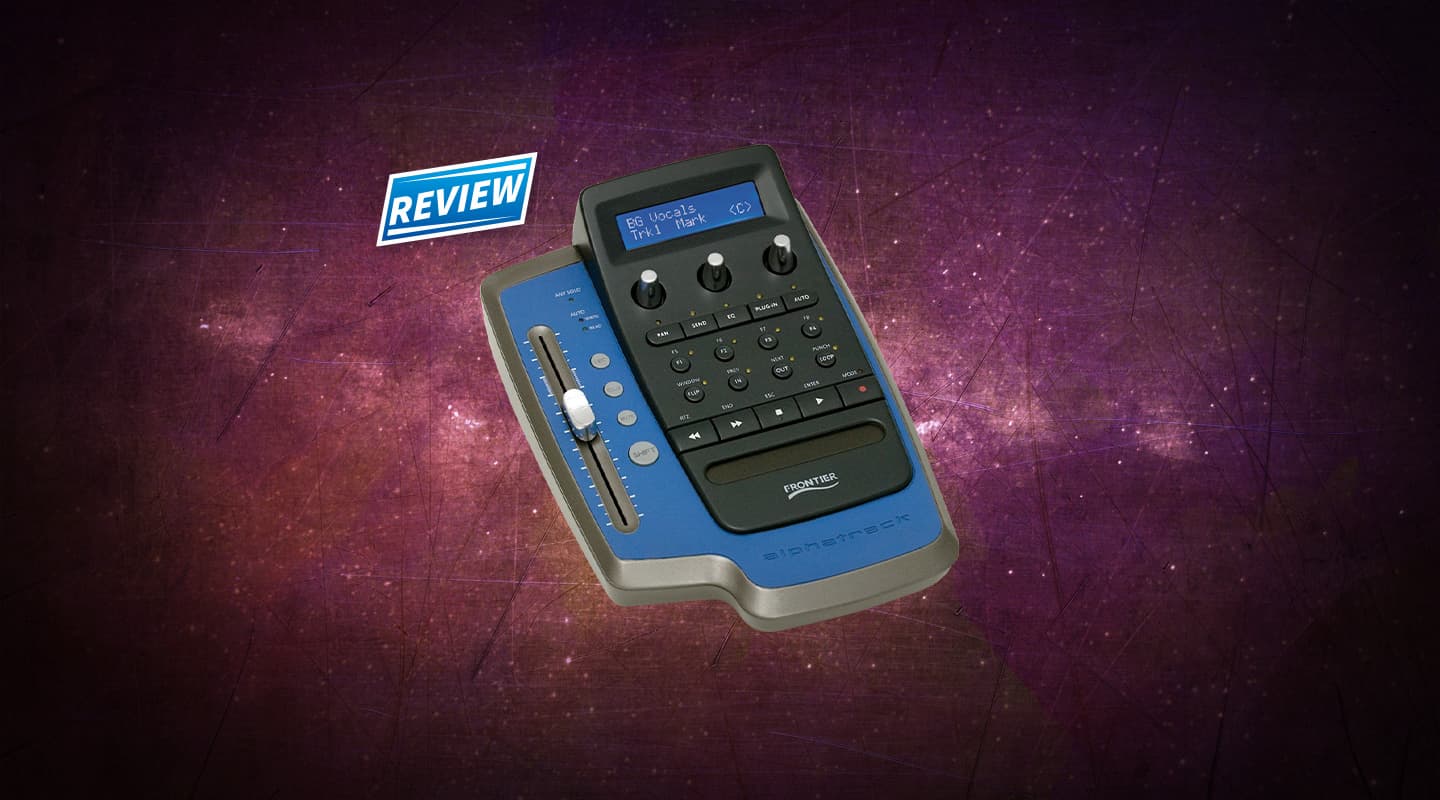
Review: Frontier Design Group Alphatrack
AT’s very own alpha male takes steps to control himself.
Text: Brad Watts
Back in Issue 51 I had a look at the PreSonus FaderPort, a single fader ‘control surface’ designed for cluttered desktops and modest budgets. As the name suggests, its biggest feature was a single, motorised fader. That’s right, just one… and why not? When it comes to computer-based editing, most of the time you’re only using a single fader to ride out a tail or juggle a software subgroup. Taking on this same line of thinking, Frontier Design Group brings its AlphaTrack to the (said cluttered) table. It’s a very similar device to the FaderPort but with a few crucial differences worth noting.
The AlphaTrack is the larger of the two units and uses the extra real estate to offer a few more controls and buttons… but first, let’s look at that all-important fader. It’s a 100mm device, it’s motorised, and offers the same reasonably smooth action and travel you’d expect to find on most lower-priced controllers – nothing earth shattering there. Plus, of course, the fader is touch-sensitive and will respond to the lightest caress. Note: long fingernails won’t cut it – in fact, the manual points out that guitarists with extremely calloused fingertips may have trouble with the unit too, which stands to reason I s’pose.
Flanking the fader are dedicated and backlit Solo, Mute and Record Arm buttons. LEDs signify automation write and read modes, and a final LED notifies you of any tracks in solo. A Shift button will access auxiliary tasks of the remaining 18 pushbuttons. These consist of a standard transport section with its second functions including Return to Zero, End, Esc and Enter – the last two emulating the keyboard equivalents.
Above the transport section are eight buttons. The first two are for switching between tracks – there’s no bank selecting here as we’ve only one fader to work with. Next, are Loop and Flip-Fader buttons, with the remaining four labelled as Function keys – how they ‘function’ depends on your DAW.
THE WILD FRONT EAR
The upper section of the AlphaTrack sports a backlit LCD display and three touch-sensitive rotary encoders. These can be lassoed into a variety of duties. When in Pan mode, the first knob shifts fader control to the next audio track, the second jumps to markers and the third adjusts panning. Being touch-sensitive pots, the screen will alter to reflect their current parameter (super-calloused guitarists beware). The remaining modes include Sends, EQ, Plug-in and Automation.
I had the AlphaTrack running under ProTools HD and LE quite happily – the device will emulate HUI protocol without a drama. Most chores were handled correctly but I was a little miffed with the poor resolution of the rotary encoders. For example, a single ‘click’ of the encoder would, for example, add 2.3dB of gain when adjusting an EQ plug-in – a little coarse for my liking. The same resolution occurred with send levels – far too coarse for fine tweaking. The encoder knobs also struck me as a tad small.
FADER WAY
The final control device nestled into the AlphaTrack is a nifty touchpad or shuttle strip. This is situated directly below the transport controls and is primarily designed for navigating between the head and tail of your project. It’s a very nifty inclusion that unfortunately didn’t function all that well in HUI mode. However, the other supported DAWs and programs include Cubase SX/SL, Sonar, Reason, Nuendo, Digital Performer 5 and Adobe Audition 2. Logic wasn’t entirely up to speed with the AlphaTrack but did function under HUI mode, albeit without plug-in operation. Mac OSX 10.3.9 and up is suitable as a platform as is Windows XP. Both USB 1.1 and 2.0 protocols are supported and, in an interesting contrast to the FaderPort, the AlphaTrack doesn’t require an external power supply – it derives its power exclusively from the USB bus. Consequently, the AlphaTrack will need its own port or, alternatively, use a powered USB hub. A 1/4-inch jack plug beside the USB connection at the rear also allows a footswitch for dropping into record. I did find the unit functioned more effortlessly via a USB 2.0 machine. Via USB 1.1 the controls would sometimes feel a bit sluggish.
So now there are a couple of choices in the single fader controller market. If you’re looking for something like this for your rig, it’d be wise to give both a run before deciding on the unit that suits best. The AlphaTrack certainly offers more features, and without a power cord, the AlphaTrack may have the edge on the FaderPort. The trackpad/shuttle strip is a clever inclusion that could address a number of tasks such as scrubbing and fine fader moves as the unit’s software evolves.
















RESPONSES